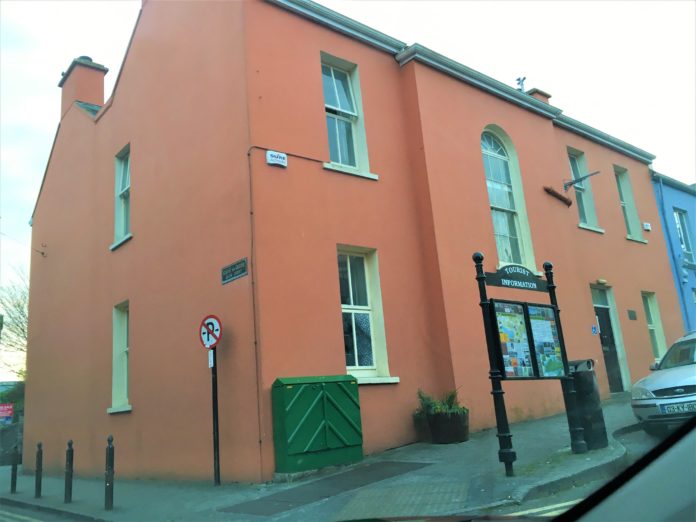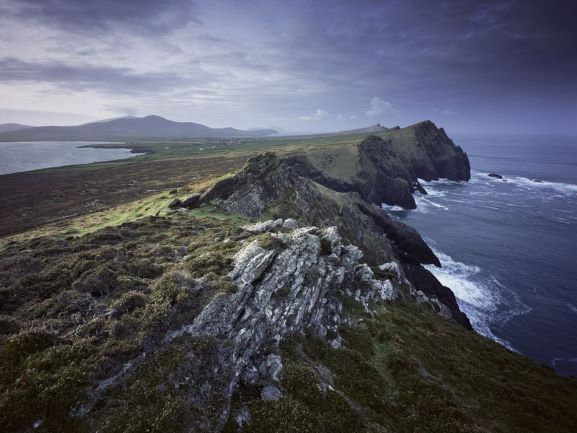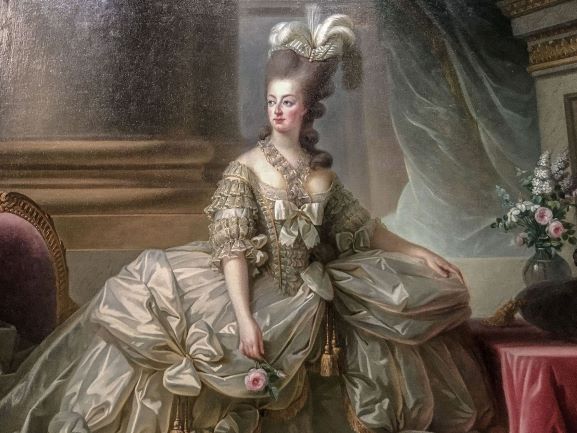This is the true story about how Marie Antoinette almost became Irish. “Almost” may be too strong a word. Maybe it is a true story about a plot to make Marie Antoinette Irish.
Marie was born in Vienna in 1755 in the royal family of the Austrian – Hapsburg empire. To seal an alliance with the French, she was pledged to marry Louis. Louis was then 11 years old and heir to the French throne. Marie was only 11. The two were married in 1770, when Marie was 14 years old. King Louis of France died a few years later, and young Louis became Louis the 16th. At the age of 19, Marie Antoinette was Queen of France.
Marie was not well liked by the French. She was frivolous and extravagant, in the face of widespread poverty in France. She may never said “Let them eat cake”, when French peasants were protesting the lack of bread. But she was a symbol of the extravagance of the French nobility which led to the French Revolution in 1789.
The French Assembly initially wrote a constitution establishing a republic with a constitutional monarch. But as a result of various plots to restore a powerful monarch, the king and queen were imprisoned. A new National Convention was formed with abolished the French monarchy.
Louis was placed in a prison. Marie and her three children remained in a home in Paris under house arrest. We’ll come back to France, but now let’s move the story to Ireland and Austria.

Black Tom Rice and his son James Louis Rice were wine traders and merchants who became quite prosperous in Dingle. The term “wine traders” is a polite way of saying that the two men were smugglers. They developed close ties with wine merchants in France and Spain, and purchased wine for distribution in Ireland and the British Isles. Their home in Dingle, known as The Rice House, is still there.
The rocky west coast of Ireland was often used by smugglers. There are many peninsulas and bays and inlets with sharp cliffs and rocky shores. It makes it very difficult to be patrolled by the British Navy. It’s very difficult to sail in these waters at all unless the captain knows it well.

There are also many sea caves. These are caverns carved out the cliffs, easily accessible by shore during low tide, but only by Curragh boat in high tide. It is very easy to hide smuggled goods in these sea caves and thus avoid payment of British taxes.
There is one particular cliff in the Dingle Harbor known by the locals as Nancy Brown’s Parlor. How it got that name, I don’t know, but one can get a beautiful view of Dingle Harbor from the top of Nancy Brown’s Parlor. Beneath the parlor, though, is one of these sea caves – undoubtedly used by Black Tom and James Rice to hide smuggled wine.
James Louis Rice went to school in Belgium and later joined the Austrian army. This wasn’t at all unusual, since there were few educational opportunities for Catholics in Ireland at the time, and many Irish Catholics served in European armies. What was unusual was that James Louis became close friends with Joseph, who later became Emperor Joseph II of the Holy Roman Empire. Joseph named both James Louis and Black Tom as Counts of the Holy Roman Empire. Joseph was the older brother of Marie Antoinette.
When Marie Antoinette was imprisoned in Paris, Count James Louis Rice of Dingle initiated a plot for her escape. He bribed the jailers to cooperate. He set up relay stations with fresh horses at each station to take Marie from Paris to the English Channel. And he had one of his wine merchant ships waiting at the coast. Rooms at the Rice House in Dingle were prepared for Marie’s arrival.
At the last minute, though, Marie refused to go. The escape plan was for her, and her alone. She refused to abandon her husband or her children, and thus remained in Paris.
While in prison, Louis wrote letters to others in the European royalty, urging them to invade France and restore the monarchy. Some of the letters were intercepted. Louis was tried and convicted of conspiracy to undermine the republic. He was executed, by guillotine, in 1793.
Marie was accused of being involved in various plots as well. The evidence against her wasn’t very strong, but she was convicted anyway. She was executed by guillotine later the same year – 1793 – at the age of 37.
She never did become Irish.
